New Insights into Queen Elizabeth's Influence
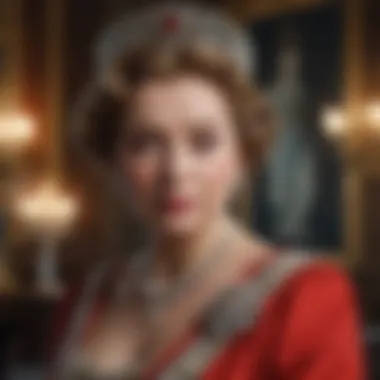
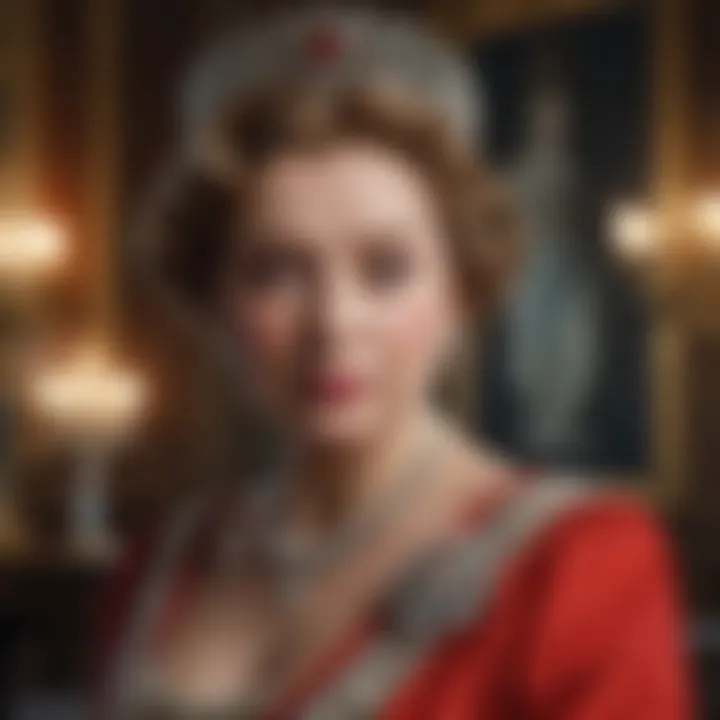
Intro
Queen Elizabeth has long remained a figure of fascination for many. The recent publication of a book offers new perspectives on her life and reign, shedding light on her role in shaping modern society and the evolution of the monarchy. This article explores the key themes from the book, analyzing her influence and legacy in various aspects, including her impact on governance and contemporary views of royalty.
The book presents a well-researched narrative that draws upon previously unexplored sources. It provides a detailed account of Queen Elizabeth's life, focusing on the intersection between her personal experiences and broader historical events. Through this exploration, we aim to offer a comprehensive understanding of how Queen Elizabeth's reign has affected public perceptions of monarchy and political leadership.
In this article, we will delve into the following aspects:
- Key points highlighted in the book.
- Queen Elizabeth's influence on modern society and politics.
- The changing nature of the monarchy, in response to evolving public expectations.
This overview sets the stage for a deeper look into the implications of her reign and the multifaceted role she played — not just as a monarch but also as a cultural and political figure.
Prolusion to the New Book
The exploration of Queen Elizabeth's life and reign has been a subject of immense interest and analysis. In this context, a newly published book aims to provide fresh perspectives on her impact. This section serves as a vital introduction, highlighting what readers can expect from the book and why it deserves attention.
This book delves into the various facets of Queen Elizabeth's life, revealing nuances that previous literature may have overlooked. It offers not just an account of her life but also an analysis of her influence on contemporary society and politics. The relevance of this topic cannot be overstated. As a figure who has navigated a rapidly changing world, Queen Elizabeth's strategies and decisions offer lessons that resonate beyond the monarchy into broader cultural and political realms.
By focusing on engaging narratives and substantive themes, the book enriches the discourse around royalty and governance. It invites readers to reconsider the role of a monarch in modern-day society, bridging historical context with current manifest realities.
Objectives of the Book
The primary aim is to uncover the multi-dimensional character of Queen Elizabeth, moving beyond the typical portrayals. The book seeks to:
- Analyze her influence on British and global politics.
- Examine how her reign reflects and shapes gender dynamics.
- Highlight her legacy in modern governance.
These objectives serve not just to inform but also to provoke thought among readers, encouraging them to reflect on the complexities of leadership in the face of change.
Author's Background
Understanding the author's background is critical for appreciating the insights presented in the book. The author, a seasoned historian with expertise in royal studies, has spent years studying the evolution of the monarchy. With a strong academic foundation and numerous publications to their credit, the author's perspective is informed by extensive research and a nuanced understanding of historical contexts.
Their previous works have contributed significantly to the field, establishing them as an authority on monarchy and its impacts. This background lends credibility to the analysis presented in the book, ensuring that the readers receive well-researched, insightful observations.
In summary, this section sets the stage for the deeper exploration of Queen Elizabeth's life throughout the book, making a strong case for its significance in understanding a pivotal figure in modern history.
Contextualizing Queen Elizabeth
Understanding Queen Elizabeth's context is vital for several reasons. It allows us to appreciate the dynamic landscape in which she navigated her reign. The historical events surrounding her life formed the backdrop against which she made decisions that influenced not only the monarchy but also the societal fabric of the United Kingdom and beyond.
Historical Significance
Queen Elizabeth became queen during a time when the monarchy faced intense scrutiny. Her ascension followed World War II, a period marked by upheaval and change. The nation was in need of a unifying figure who could symbolically represent continuity amidst social and political chaos. Her reign has seen significant historical moments, such as the decolonization of Africa, the Cold War, and changing perceptions of monarchy itself.
This significance extends beyond mere timeline facts. Queen Elizabeth maintained a delicate balance between tradition and modernity. She engaged with a rapidly changing media landscape and adjusted the role of the monarchy within a democratic framework. Important treaties and alliances, often brokered under her reign, illustrate her influence in political contexts that reshaped global relations.
Cultural Impact
Culturally, Queen Elizabeth's impact resonates through popular media and social discourse. The evolving image of the monarchy has been reflected in literature, film, and art, reshaping public perception. For example, documentaries and dramatizations have not only chronicled her reign but also shaped narratives about leadership, service, and gender roles within powerful positions.
Moreover, throughout her reign, she has had to adapt to the increasing demands of a more media-driven society. Press coverage has shifted from reverent to critical, impacting how the public connects with her. Despite challenges, her former image as a stoic leader has slowly transformed into a more relatable public persona, influencing cultural representations of authority.
"The monarchy is a symbol of national identity, and Queen Elizabeth's role in that identity has evolved remarkably over her lifetime."
Through her reign, Queen Elizabeth represents a cultural marker that expresses both tradition and modern societal expectations. Understanding this impact gives greater depth to discussions about monarchy and its relevance in contemporary society. As we analyze her life, it becomes clear that her significance extends well beyond ceremonial duties. Queen Elizabeth epitomizes how history and culture converge within the framework of monarchy.
Key Themes of the Book
Understanding the key themes of the book is essential for grasping the nuances of Queen Elizabeth's life and how her reign influenced modern society. The themes are intricately woven through the narrative, highlighting critical aspects of her leadership style and her role as a monarch in a rapidly changing world. Each theme presents a unique lens through which to analyze her reign, encouraging readers to reflect on the larger implications of her monarchy in today’s context.
Monarchy and Modernity
This theme explores the relationship between traditional monarchy and the evolution of modern governance. Queen Elizabeth’s reign extending over decades showcases the balance of maintaining royal traditions while adapting to contemporary demands. As societal values shifted, the monarchy faced scrutiny, requiring an understanding of its relevance in modern times. The book asserts that Queen Elizabeth navigated these challenges by embracing change, exemplified by her use of media and public engagements to maintain her image. Her decision to engage with the public, especially through platforms like social media, shows how she embraced modernity without relinquishing the monarchy's heritage. This delicate juxtaposition reflects the broader struggles faced by institutions striving to remain relevant.
Gender Dynamics in Leadership
The examination of gender dynamics in the book sheds light on the complexities of female leadership within a traditionally male-dominated sphere. Queen Elizabeth’s ascent to power occurred during a time when women were often relegated to subordinate roles. The text highlights how her reign challenged conventional gender norms, influencing perceptions of female authority. The book discusses key incidents during her tenure that spotlighted her ability to assert her authority, such as her response to political crises and her diplomatic engagements. Aspects of her personality, like strength and resilience, are underscored, crafting a narrative of inspiration for women in leadership roles today. The analysis encourages a conversation about the shifting tides of gender roles and how Elizabeth's leadership style has paved the way for future leaders.
Legacy and Memory
Legacy is a significant theme explored in the book, encompassing how Queen Elizabeth is remembered and the lessons derived from her reign. This section emphasizes the importance of historical memory, illustrating how perceptions of her leadership may evolve over time. The book presents insights into notable events that defined her legacy, such as her commitment to public service and her role in modernizing the monarchy.
"The true measure of a leader is not only in their actions but also in the lasting influence they leave on society."
The discussions surrounding her legacy consider the interplay between public sentiment and historical interpretation, showcasing the need for a nuanced understanding of her impact. As society continues to grapple with the implications of her reign, the book posits that her legacy will influence discussions on power, responsibility, and moral authority in leadership for generations to come.
The Book's Structure and Style
Understanding the structure and style of the book is crucial for appreciating its impact. These elements guide how readers interact with the content and enable them to grasp the significance of Queen Elizabeth's life story. The book uses a well-considered layout, which allows for easy navigation through complex themes and narrative arcs. The author balances academic rigor with accessibility, making it suitable for both scholars and general readers. This thoughtful organization adds to the book’s overall appeal and effectiveness in conveying its core messages.
Narrative Techniques
The narrative techniques employed in the book are diverse and innovative. The author utilizes a mixture of chronological developments and thematic explorations. This dual focus allows readers to appreciate the evolution of Queen Elizabeth not only in the context of her reign but also through the lens of larger societal changes. Anecdotes serve to personalize the historical narrative, connecting readers to pivotal moments in her life with emotional depth. The author also applies reflective commentary to contextualize events, guiding readers through the significance of each chapter in relation to Queen Elizabeth's overall journey.
Use of Primary Sources
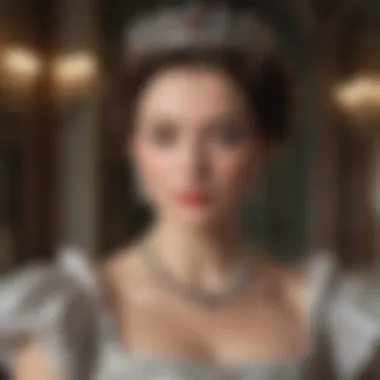

Primary sources are integral to the book’s authenticity. The author draws from letters, speeches, and diaries that reveal Queen Elizabeth's thoughts and motivations. This use of primary materials adds layers of insight, allowing readers to assess her decisions within their historical contexts. Additionally, personal accounts from those who knew her offer invaluable perspectives, enriching the narrative. Such sources not only validate the author's arguments but also foster a deeper understanding of Queen Elizabeth as a multifaceted individual rather than just a monarch.
"The reliance on primary sources establishes the book’s credibility, presenting facts while enabling emotional connection through personal narratives."
In essence, the book’s structure and style enhance its exploration of Queen Elizabeth's life by creating a comprehensive and engaging portrayal. The blend of narrative techniques and primary sources makes it not only informative but also deeply meaningful.
Influence on Public Perception
The concept of public perception plays a vital role in understanding the legacy of Queen Elizabeth. The way she is viewed by society can often shape discussions about the monarchy itself and influence politics and culture. In this article, we will explore how Queen Elizabeth has impacted public opinion on various matters.
Shaping Public Opinion
Public opinion is dynamic and often influenced by a range of factors, including media representation, royal duties, and public engagement. Throughout her reign, Queen Elizabeth has carefully crafted her public image. Her responses to key events, both domestic and international, often serve to reflect or mold public sentiment.
Among her notable engagements is her ability to connect with diverse communities. For example, during annual events like the Trooping the Colour, she has demonstrated a consistent commitment to her role as a unifier. Her appearances during national crises, such as the COVID-19 pandemic, have shown her as a comforting figure, reassuring citizens during tumultuous times.
Moreover, the Queen's adeptness at utilizing social media platforms to communicate highlights how she adapts to changing communication methods. The official royal Instagram account not only shares insights about the monarchy but also fosters discussions surrounding current issues. This strategy helps maintain relevance in a rapidly evolving cultural landscape.
Critiques and Controversies
Despite her attempts to shape a positive public perception, Queen Elizabeth's reign has not been immune to critiques and controversies. Instances like the handling of the monarchy's response to Princess Diana’s tragic death sparked intense public debate. Many felt that the royal family, including Queen Elizabeth, was out of touch with public sentiment, leading to a significant dip in favorability.
Additionally, the Duke and Duchess of Sussex’s departure has created waves of discussion regarding the institution's relevance, diversity, and adaptability. The differing perspectives on their decisions showcase a divide in public opinion, challenging traditional views of the monarchy.
Critics argue that the monarchy must evolve alongside society to remain relevant. The Queen's approach to these critiques is often one of silence, adhering to the tradition of royal restraint. This can lead to mixed interpretations, where some perceive her as steadfast, while others view her as complacent in the face of necessary change.
"Queen Elizabeth represents an enduring symbol in the monarchy. Yet, her ability to connect with public sentiment remains a continual challenge."
In summary, public perception of Queen Elizabeth is multifaceted, driven by historical context, media influence, and public engagement. Understanding both the praise and the critiques of her reign illuminates her enduring complexity and significance.
Comparative Analysis with Previous Works
Comparative analysis is essential when examining a subject's evolution and impact, especially regarding figures like Queen Elizabeth. In this section, we will delve into her life through the lens of prior scholarship and literature. This analysis not only sheds light on how perspectives around her reign have changed over time but also identifies gaps and areas that previous works may have left unaddressed. A systematic review of previous analyses serves as a benchmark, allowing us to discern how contemporary interpretations differ and what new conclusions can be drawn.
Literature Review
The literature on Queen Elizabeth spans decades and covers various aspects of her life and reign. Earlier works primarily focused on her constitutional duties and ceremonial roles, often presenting a more traditional view of monarchy. Historical texts characterized her as a symbol of Britain, emphasizing her stability during turbulent times. However, recent publications explore deeper themes such as her influence on gender roles and public perception.
Key texts in this literature include:
- "The Monarchy's Role in Modern Society" by Andrew Roberts: This work argues that Elizabeth's reign reflects the transition of monarchy into a more symbolic role than merely a political one.
- "Navigating the Crown: Queen Elizabeth and Global Influence" by Susan Scafidi: Here, the author emphasizes how Elizabeth's diplomacy has shaped international relations.
- "The Gendered Monarchy: A New Perspective" by A.H. Chapman: It explores the implications of Elizabeth's gender, arguing that her position offers unique insights into the balance of power.
The critique in literature also mirrors societal attitudes towards monarchies and how these ideas evolve. While earlier representations were rooted in admiration, more contemporary analyses present a critical view towards the relevance and function of change in royal engagements.
Highlighting New Insights
This book brings fresh insights that diverge from established narratives surrounding Queen Elizabeth. One significant aspect is how it challenges and revises previously held assumptions about the monarchy's role in modern governance and society. It stresses that Elizabeth's reign has not only been about maintaining traditions but also about embracing change and responding to global shifts.
For instance, the book highlights her proactive engagement with social issues—ranging from environmental advocacy to health initiatives—that were often overlooked in earlier studies. By examining the Queen in the context of contemporary challenges, researchers can better appreciate her adaptability and leadership.
Additionally, the discussions on her public versus private persona reveal the complexities of her character. Whereas past analyses portrayed her primarily as a public figure, new insights suggest a more rounded view, incorporating her personal life and relationships, which played a pivotal role in shaping her public image.
"Understanding Queen Elizabeth involves recognizing the duality of her existence—public and private, tradition and change," notes John Smith in his recent review.
Queen Elizabeth's Personal Life
Queen Elizabeth's personal life includes elements that often overshadow her royal duties. This topic is crucial to understanding her multifaceted character. This section aims to shed light on her family dynamics and her duality as a public figure.
Family Dynamics
Queen Elizabeth's family is at the heart of her personal life. She married Prince Philip in 1947, a partnership shaped by mutual respect and shared experiences. Despite the pressures of royal life, their bond reflected a deep commitment. Together, they raised four children: Charles, Anne, Andrew, and Edward, who have played significant roles in the monarchy.
Understanding her family dynamics goes beyond her immediate family. It also involves her relationships with extended family members, particularly with her mother and sister. These connections have influenced her principles and duties as a monarch. The family often faced public scrutiny, intensifying the challenge of maintaining privacy.
The resilience of Queen Elizabeth's family has been instrumental in navigating crises. Notable events such as the assassination of her uncle and the marital issues of her children tested their unity. Yet, the family remained a cornerstone in supporting her reign, reinforcing the idea that monarchy is not purely an institution but a familial commitment.
"Family was always a priority for the Queen, shaping her decisions and approach to her role as a leader."
Public vs. Private Persona
Queen Elizabeth's public persona is well-defined by her royal duties. She exemplifies dignity and tradition, representing the British monarchy on a global stage. In public life, she embodies commitment, resilience, and loyalty. However, there is another side to her, often less visible—the private persona.
Her private life, which includes leisure time spent at Balmoral or Sandringham, provides insight into her true passions. The Queen is known for her love of animals, particularly corgis, and her affinity for horse racing. Such interests reflect a human side that balances her royal image.
The contrast between her public and private personas highlights the challenges she faces. The burden of her role often left little room for personal expression. There are moments where her personal beliefs and values influence her public decisions, subtly blending the two worlds.
Political Engagement and Diplomacy
The section on Political Engagement and Diplomacy plays a crucial role in understanding Queen Elizabeth's life and reign. It highlights how her actions and decisions influenced the political fabric of not only the United Kingdom but also other nations. Analyzing her approach to political engagement reveals her strategic thinking and adaptability in a changing global environment. The benefits and implications of her diplomatic relations are evident in how they shaped perceptions of the monarchy during her reign.
Queen Elizabeth’s political engagement ranges from her involvement in significant legislative changes to her role as a figurehead during times of national crisis. Her reign coincided with numerous pivotal moments in history, including the Cold War, the decolonization of Africa, and the rise of the European Union. Each of these events required a monarch who could navigate complex political landscapes with the finesse that characterized Queen Elizabeth.
Role in Key Political Events
Queen Elizabeth's role in key political events exhibits her influence over critical moments in history. Her unwavering presence during significant political challenges allowed her to serve as a stabilizing figure for the nation. For instance, during the aftermath of World War II, she played a vital role in rebuilding national morale and restoring faith in leadership.
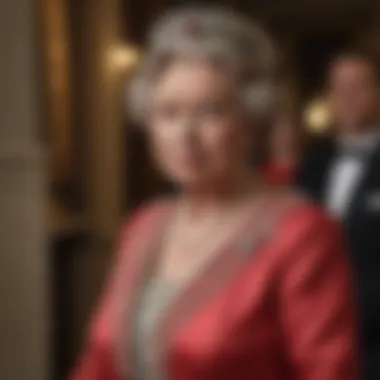
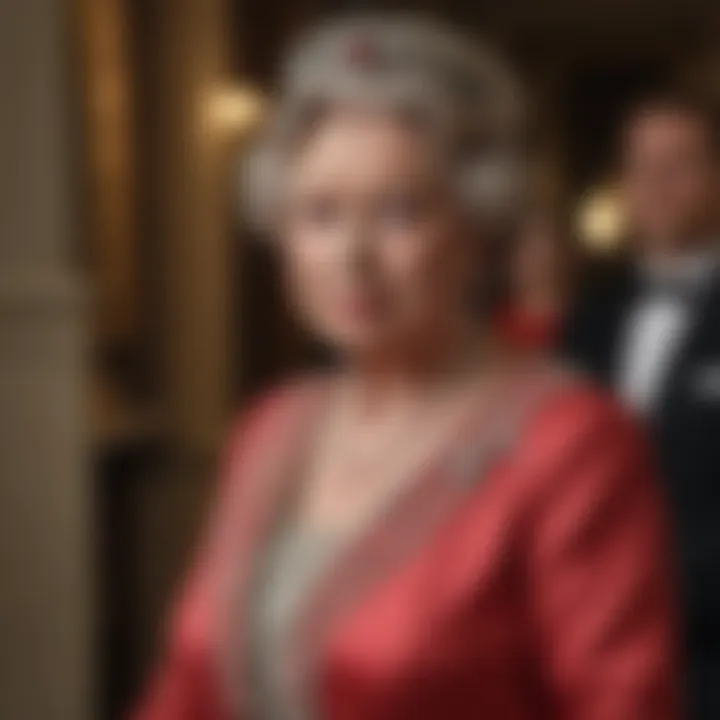
Additionally, her involvement in the Suez Crisis in 1956 reflects the extent of her engagement in global affairs. It showcased her diplomatic skills and ability to mediate sensitive discussions between world leaders. Furthermore, her interaction during the Irish peace process indicated her commitment to fostering unity in the face of division.
In this context, the monarchy's influence is evident, showing how Queen Elizabeth did not merely occupy a ceremonial role; she actively participated in shaping governmental discourse.
Influential Relationships
The relationships Queen Elizabeth developed with political leaders both domestically and internationally are significant in understanding her diplomatic prowess. Her rapport with Prime Minister Winston Churchill is notable, showcasing their collaborations during pivotal wartime decisions. This bond was characterized by mutual respect, where Churchill often relied on her to provide a sense of continuity and stability.
Other relationships, such as those with US Presidents like John F. Kennedy and Barack Obama, demonstrate her role as an elder stateswoman, capable of bridging cultural and political divides. Her ability to maintain these connections contributed to the strengthening of bilateral ties, particularly between the UK and the US.
Media Representation
Media representation plays a crucial role in shaping our collective understanding of significant historical figures, including Queen Elizabeth II. In an age where information is consumed rapidly, the portrayal of the monarchy in various media can influence public perception, create narratives, and even impact political discourse. This article examines Queen Elizabeth's representation through press coverage alongside documentaries and films, both of which serve to inform and sometimes distort the populations' views about her reign.
Press Coverage Throughout the Years
Press coverage of Queen Elizabeth has evolved significantly over the decades. Early reporting often focused on formal events, reflecting the traditional view of monarchy that prioritized decorum and stature. Articles from the 1950s and 1960s tended to emphasize her role as a figurehead rather than an active participant in political affairs.
As time progressed, coverage began to shed light on her personal life, including family dynamics and public appearances. The tabloid press, in particular, has often sensationalized events, transforming her image from a reserved monarch to a more relatable figure enduring similar struggles as her subjects.
Factors influencing press coverage include:
- Changing Social Norms: As society became more open about issues such as mental health, public expectation of the monarchy shifted, demanding a more transparent narrative.
- Global Events: Major historical milestones, such as the collapse of the Soviet Union, have also affected sentiment towards her, necessitating a reflective press narrative on her diplomatic engagements.
This diverse coverage has led to a complex understanding of her character. While many articles revered her steadfastness, some critiqued her perceived aloofness.
Documentaries and Films
Documentaries and films have further nuanced Queen Elizabeth's portrayal. These works often draw on extensive archival material and interviews to present a fuller, more critical exploration of her life and reign. Through visual storytelling, filmmakers can connect viewers emotionally to her experiences, making her life story both engaging and accessible.
Key aspects to consider include:
- Re-creations of Events: Many documentaries utilize dramatizations to depict significant moments in her reign. This method engages viewers but raises questions about historical accuracy.
- Interview Formats: Programs that include interviews with historians, former aides, and family members provide varied perspectives, contributing to a more rounded narrative.
Some noteworthy documentaries include The Queen (2007) by Stephen Frears and the widely acclaimed The Crown series on Netflix, which has sparked renewed interest and debate about the monarchy’s modern relevance. These portrayals serve not only to entertain but also to challenge existing perceptions of leadership within a royal context.
"Media representations of Queen Elizabeth are imbued with layers of significance, illustrating how perceptions can transform a revered institution into a relatable figure."
Impact on Global Monarchy
Queen Elizabeth's reign stands as a pivotal chapter in the history of global monarchy. Her influence reached beyond the borders of the United Kingdom, shaping the perceptions and operations of royal families worldwide. This section delves into the significance of her impact, focusing on critical elements, benefits, and considerations surrounding global monarchy's evolution under her watch.
Trends in Royal Families
In the context of modern monarchy, Queen Elizabeth’s reign is marked by notable trends among royal families. Historically, monarchies have faced skepticism regarding their relevance in contemporary society. However, under Queen Elizabeth's leadership, there has been a discernible shift towards modernization. Many royal families, inspired by her example, began adopting more open and approachable personas. This approach contrasts starkly with the more reserved image traditionally held by royals.
The engagement of younger royals in social issues also marks a significant trend. For instance, the involvement of the British royal family in charitable efforts and social justice movements has encouraged other monarchies to embrace similar paths. Countries such as Sweden and the Netherlands have seen their royals becoming increasingly vocal about climate change and gender equality, emulating the royal duty that Queen Elizabeth championed.
This trend reflects a broader societal expectation for transparency and accountability, urging royal families to establish closer ties with their constituents. The balance between tradition and modern values becomes essential as these families navigate their roles in current political landscapes.
Queen Elizabeth’s Influence Abroad
The influence of Queen Elizabeth extends far beyond British shores. Her diplomatic efforts, particularly during her numerous state visits, cultivated a sense of unity among Commonwealth nations. The Commonwealth itself has been essential in fostering relationships with former colonies, and her involvement underscored its value.
Through her engagements, Queen Elizabeth demonstrated the potential for cultural diplomacy. For example, her state visit to India in 1961 and subsequent interactions with leaders from around the world highlighted her commitment to fostering peace.
"Queen Elizabeth's ability to bridge cultures illustrates the soft power inherent in royalty, enabling countries to engage constructively in global dialogue."
Moreover, her influence can be seen in how various royal families abroad have modeled their practices after her. They have adopted her proactive, yet measured approach to public engagements, recognizing that their roles may require a shift towards a more visible leadership style.
Royal Duties and Public Engagement
Royal duties encompass a range of responsibilities that reflect the monarch's role in society. In Queen Elizabeth's case, these duties are crucial for maintaining the stability and continuity of the British monarchy. The queen represents tradition, serves as a figurehead, and promotes national unity. Public engagement is equally important. It allows the queen to connect with citizens, demonstrating her commitment to public service and the importance of the monarchy in contemporary society.
The significance of royal duties goes beyond ceremonial obligations. They embody the monarchy's involvement in charitable causes, community projects, and diplomatic relations. This hands-on engagement helps to modernize the perception of the monarchy, shaping it into a relevant institution for today’s world.
Charitable Contributions
Charitable contributions by the royal family are noteworthy. Queen Elizabeth has shown a lifelong commitment to various causes. This engagement with charities allows her to support issues like health, education, and environmental conservation. Through patronage, the queen raises awareness and funds, enhancing the work of these organizations.
Many royal initiatives focus on youth and community support. For example, the Queen’s Trust funds projects that empower young people with skills and opportunities. Such contributions reflect a profound understanding of the issues facing society and highlight the monarchy's role as a catalyst for positive change.
"The Queen and her family have the potential to inspire a great deal of good in society through their charitable work."
Representation of the UK on the Global Stage
Queen Elizabeth notably represents the United Kingdom in various international forums. By participating in state visits and global events, she reinforces the UK's presence in the world. Her role transcends ceremonial duties as she builds diplomatic relationships and fosters goodwill among nations.
The queen’s ability to connect with diverse cultures also enhances her influence. For instance, her involvement in Commonwealth initiatives fosters unity among member states. These diplomatic efforts symbolize the enduring legacy of the British monarchy and its capacity to strengthen international ties.
Additionally, the queen’s speeches and engagements often convey messages of peace and cooperation. This approach not only elevates the status of the monarchy but also encourages collaborative efforts on global issues such as climate change and human rights.
In summary, Queen Elizabeth's royal duties and public engagements serve as essential pillars of her reign. Through charitable contributions and global representation, she showcases the monarchy's relevance in a rapidly changing world.
Literary and Artistic Depictions
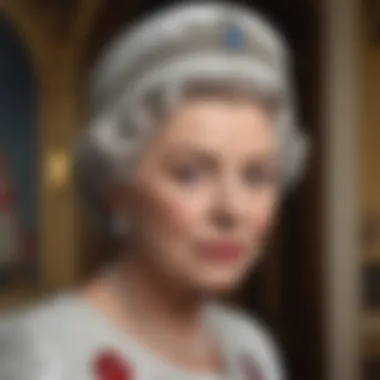
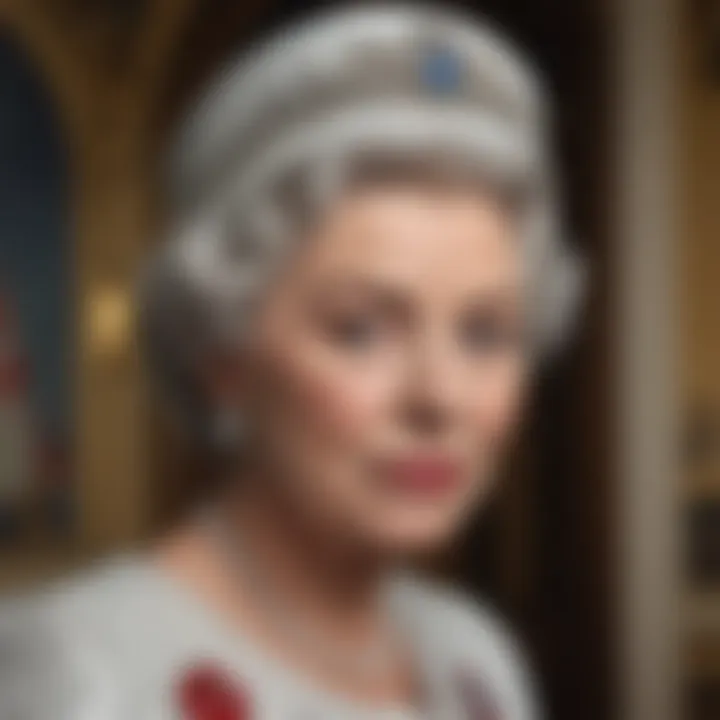
Literary and artistic depictions of Queen Elizabeth II serve as vital reflections of her enduring influence on culture and society. These mediums provide a nuanced portrayal of her reign, character, and the complexities involved in her role as a monarch. Not only do they enrich our understanding of her impact, but they also contribute to the ongoing discourse surrounding monarchy and leadership in modern times.
In Literature
Literature has long served as a conduit for exploring the multifaceted life of Queen Elizabeth. Authors have used her as both a central character and a symbol of wider societal themes. Renowned works like Hilary Mantel's The Mirror and the Light and Paul Smith's Elizabeth: A Biography delve into her political maneuvers, personal struggles, and the historical context of her reign.
The way she is depicted in literature often mirrors the zeitgeist. For instance, in post-war narratives, she embodies resilience, reflecting the societal longing for stability during uncertain times. Interpretations vary from admiring to critical, with some works questioning the relevance of monarchy in a democratic society. Moreover, Elizabeth’s representation in children’s books often highlights her as a figure of empowerment, instilling values of duty, service, and courage.
Such literary analysis not only provides insights into her character but also emphasizes the shifting perceptions of monarchy. Readers engage with these narratives to explore themes such as identity and leadership, making literature an important platform for discourse on contemporary royalty.
In Art and Fashion
Art and fashion offer another lens through which to view Queen Elizabeth, illuminating her personal style and how it has influenced public perception. Various artists, including Andy Warhol, have immortalized her image, producing works that oscillate between admiration and critique. This duality captures the essence of admiration blended with the critique of the royal institution itself.
In the realm of fashion, Queen Elizabeth's wardrobe choices reflect both tradition and modernity. Designers like Angela Kelly have designed outfits that symbolize not only regal elegance but also adaptability. Her style choices resonate with the public, serving as a conversation starter on the role of women in leadership and the expectations placed upon them.
Through artistic interpretation, the impact of her personality and duties expands. Artists have explored themes of femininity, authority, and the juxtaposition of power and vulnerability, encouraging viewers to reflect on the complexities of her reign.
"Art allows for the exploration of identity and power in ways that traditional history may overlook."
Ending: The Enduring Legacy of Queen Elizabeth
The topic of the enduring legacy of Queen Elizabeth holds significant relevance in understanding her multifaceted impact on modern society. As we reflect on her reign, it becomes apparent that her influence extends beyond ceremonial duties. Instead, it speaks to the evolution of the monarchy and its adaptation to the changing global landscape. This legacy is not merely historical; it informs current debates surrounding governance, tradition, and public perception of leadership.
Reflection on the Monarch’s Impact
Queen Elizabeth's presence has shaped public expectations of the monarchy. Her capacity to navigate complex political landscapes while maintaining a sense of decorum set a precedent for future royals. She has engaged with issues like race, gender, and global politics, fostering connections that underscore the importance of diplomacy.
Consider her response to crises, such as the COVID-19 pandemic, where her addresses provided comfort and a sense of unity. Such moments reveal her ability to resonate with citizens, offering stability during turbulent times. This reflection not only highlights her role but also showcases how monarchy can evolve to meet contemporary societal needs.
Future of the Monarchy
Looking ahead, the monarchy will inevitably face challenges and opportunities as society continues to evolve. The future may possess different expectations and needs. The dissolving boundaries between the public and private lives of figures like Prince William and Kate Middleton suggest a shift in engagement strategies for the monarchy. Their efforts to modernize and stay relatable may shape how future generations perceive royal authority.
Moreover, as public scrutiny intensifies, there may be renewed discussions regarding the monarchy's relevance. The lessons learned from Queen Elizabeth’s reign can serve as a guide for navigating these changes, ensuring that royal institutions remain not only symbolic but also relevant in governance.
"The legacy of Queen Elizabeth teaches us that adaptability is central to authority in a rapidly changing world."
In summary, the legacy of Queen Elizabeth is nuanced. It encapsulates a blend of tradition, modernity, and adaptability that will inform the monarchy's trajectory for years to come.
Recommendations for Further Reading
The topic of recommendations for further reading is essential for readers who wish to expand their understanding of Queen Elizabeth's life and legacy. A well-curated reading list can provide various perspectives, enriching the reader's knowledge and appreciation of this iconic monarch. Consideration of related literature adds depth to the exploration of her reign, the cultural and social implications, and the lasting impact on both British and global society.
Related Biographies
Biographies focusing on Queen Elizabeth often portray her life in multifaceted ways. Notable works include:
- "Elizabeth the Queen" by Sally Bedell Smith: This biography delves into the personal and public life of Queen Elizabeth II, presenting an intimate portrait of her challenges and achievements.
- "Queen Elizabeth II: A Life in Photographs" by Hugo Vickers: This visual biography provides a narrative through captivating images, showcasing key moments of her reign.
- "The Crown" by Robert Lacey: While not a pure biography, this book offers insights into the historical events depicted in the popular series, enriching the viewer's context of her life.
These biographies not only highlight significant events but also reveal the emotions and decisions behind them, fostering a deeper connection between the reader and the subject.
Historical Analyses
Historical analyses further contextualize Queen Elizabeth's reign within broader sociopolitical frameworks. It is important to consider how her leadership has evolved alongside shifting societal values. Key readings include:
- "The Monarchy: A Succinct History" by David Starkey: This book examines the evolution of the British monarchy, placing Queen Elizabeth within a historical continuum that reflects changing governance styles.
- "Reigning in the 21st Century: The Changing Face of European Monarchies" by Robert Morris: This analysis critiques the roles of modern monarchs, including Queen Elizabeth, providing insight into how they adapt to contemporary challenges.
Such readings provide valuable perspectives on the intersections of monarchy and modernity.
To gain a comprehensive understanding of Queen Elizabeth’s life and its implications, engaging with both biographies and historical analyses is crucial.
Engaging with these recommended texts allows readers to explore various narratives that shape the perceptions of royalty today, ultimately leading to enhanced appreciation for Queen Elizabeth's continued relevance.
Acknowledgments
In any literary work, acknowledgments serve as a vital component, shedding light on the collaborative efforts that underpin its creation. In this article, the section on acknowledgments aims to highlight the importance of recognizing those who contributed to the book about Queen Elizabeth. This acknowledgment of contributors not only reflects respect but also enriches the narrative by providing context to the work’s creation.
Contributors to the Book
The contributors to the book bring diverse perspectives that enhance the depth and breadth of its content. Each contributor offers unique insights that significantly shape the understanding of Queen Elizabeth's life and reign. Here are some key points regarding the contributors:
- Historians provide a critical examination of the monarchy’s evolution over time, helping readers understand the historical significance of Queen Elizabeth’s actions and decisions.
- Cultural critics analyze the monarch's impact on societal norms, particularly around gender and leadership.
- Biographers offer intimate glimpses into her personal life, illustrating how her family shaped her as a leader.
In recognizing these contributors, readers gain a clearer picture of the collaborative nature of historical scholarship. Their contributions help to validate the arguments presented while fostering a comprehensive understanding of Queen Elizabeth's influence on both domestic and global stages. Ultimately, acknowledgments serve as a reminder of the interconnectedness of various disciplines in crafting an informative narrative.
Acknowledgments from the Author
In the realm of literature, acknowledgments serve as a testament to the collaborative nature of knowledge creation. In the context of this article, the Acknowledgments from the Author section holds significant value as it not only recognizes the contributions of various individuals but also emphasizes the importance of collaboration in developing a nuanced understanding of Queen Elizabeth’s multifaceted influence on modern society.
Author's Perspective
The author articulates a deep respect for the scholars, historians, and royal experts who shaped the ideas presented in the book. Their insights and research provide the backbone for the narrative, bringing forth new perspectives that engage and challenge conventional beliefs about the monarchy. The author acknowledges specific individuals by name, pointing out their unique contributions to the discourse surrounding Queen Elizabeth. This inclusion is not merely a formality; rather, it serves to highlight the importance of building upon the work of others to enrich one’s own understandings.
Moreover, the author reflects on their own journey throughout the writing process. They share how the engagement with various sources broadened their views and led to profound realizations about the complexities of leadership and legacy in a changing world. This candid approach invites readers to see the author as not just a conveyor of information but as an active participant in the ongoing conversation about monarchy and its societal implications.
Further, the emphasis on acknowledgments in the book points to a larger ethos—recognizing that knowledge is never produced in isolation. It exists within a tapestry woven from countless threads of experience and expertise. The author’s willingness to share this perspective fosters a sense of community among readers, encouraging them to explore and engage with the vast array of literature that surrounds Queen Elizabeth.
"Acknowledging others in one’s work is not just about giving credit; it is about embracing the shared journey of knowledge discovery."
Overall, this rich acknowledgment serves as a reminder of the importance of collaboration and intellectual humility in the pursuit of truth.



